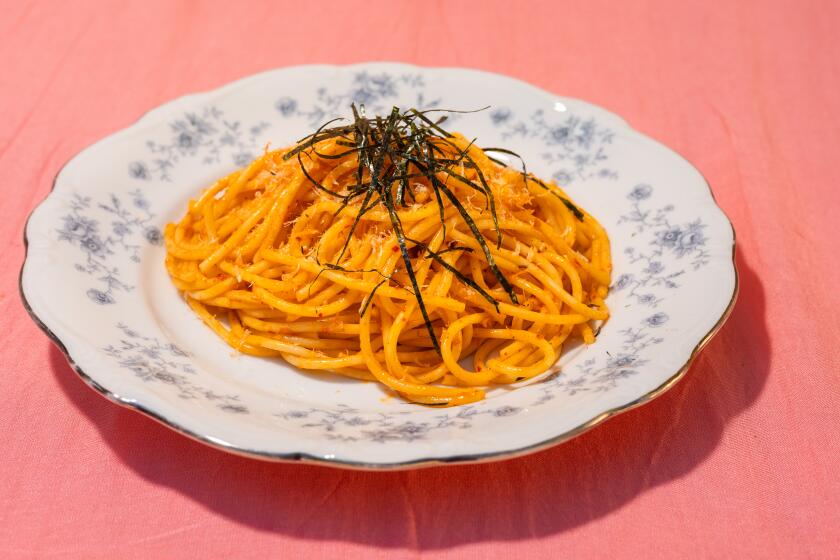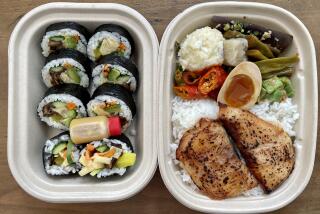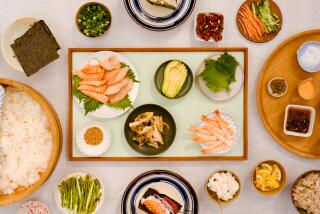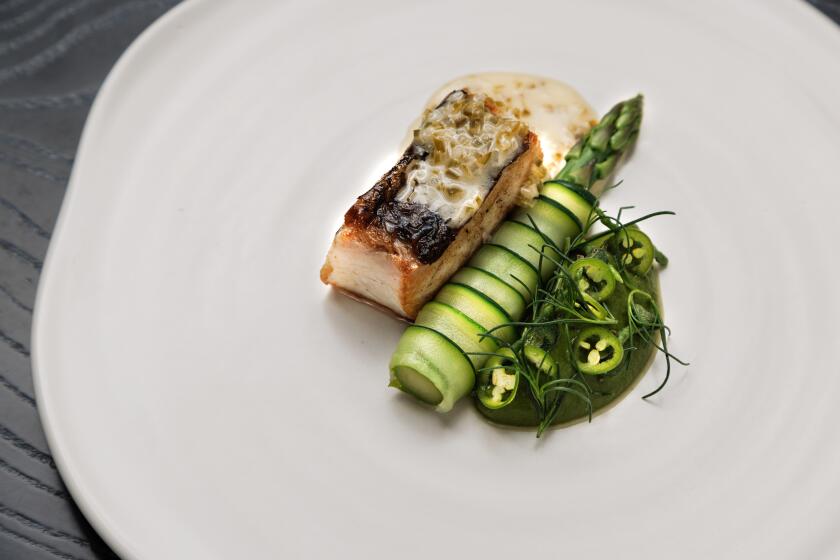
Every cook, no matter how skilled or dedicated, has faced off with a fridge crammed with nothing but the limp remains of once-pristine groceries. With 7 o’clock fast approaching, it’s too late to go to the store. Even a disappointing meal via delivery app will take at least 30 minutes. What’s a hungry person to do?
Well, here’s what I do: Whip up a pan of buttered pasta made with dried shrimp. It’s a glorious pile of spaghetti with a glossy, creamy, flavor-packed sauce.
This recipe takes its inspiration from mentaiko pasta, a Japanese dish of spaghetti tossed with salted cod roe and topped with nori threads. Invented more than a half century ago at Kabe no Ana in Shibuya, Tokyo, the original pasta was made with caviar, brought in by a customer.
The restaurant’s founder, Takayasu Narimatsu, liked the impromptu pasta so much, he put it on the menu, subbing out the costly caviar for the more affordable tarako, cured cod roe. Eventually, he also began offering a pasta using the spicy cured cod roe mentaiko.
In the spirit of culinary telephone, this pasta replaces mentaiko, which I don’t often remember to buy, with dried shrimp, which I always have in stock.

The key to the fragrant broth for this vegan version of a beloved Saigon street snack — using white beans instead of snails — is in the spice paste.
Pulverize the dried shrimp in a food processor, cook it in some butter and sake, add chile powder, lemon juice and a little more butter to get the sauce glossy, then add cooked spaghetti.
The result is a comforting plate of pasta in a shrimpy, buttery sauce that has a depth that mimics long-simmered stock. A kiddie-menu buttered pasta, in other words, that’s all grown up and now lives by the seaside, enjoys a steady intake of sake and makes entertaining look effortless. (It’s worthy of company.)
This dish relies on two key ingredients that do merit some consideration.
Selecting dried shrimp

Dried shrimp — sold at most Asian markets across L.A. — is produced in many countries, and quality varies widely. Pay attention to the size of the shrimp, the color of the shrimp and how the shrimp are stored. There are a handful of shrimping companies in Louisiana that make excellent dried shrimp. These shrimp would be ideal — they will likely be fresher than any import sitting in a warehouse. Choose medium to large shrimp, which will deliver more flavor than smaller shrimp.
I also prefer peeled shrimp over unpeeled head-on shrimp, which has a more robust shrimp taste. Look for dried shrimp that is a deep orange, which is an indication of its relative freshness: As dried shrimp ages, it declines in flavor and loses its vibrant color. Note that some manufacturers add artificial coloring to the shrimp, so avoid those packages so you can accurately gauge the shrimp’s coloring.
Shrimp also loses flavor quickly if kept at room temperature, so buy dried shrimp that’s stored in the refrigerated or freezer section. After opening, store any leftover shrimp in an airtight container in the fridge.
Diep Tran's Buttered Pasta With Dried Shrimp And Sake
Choosing your sake
The role of sake in this pasta is twofold: Sake helps tame strong odors from the shrimp, and it will enliven the shrimp’s flavors. It also contains a good amount of its own umami. For those who are knowledgeable sake drinkers, I have no more useful advice than to use a sake that you like the taste of.
I myself am not a knowledgeable sake drinker, and the world of sake can feel like a dizzying if delightful rabbit warren, so to help me pick one for this recipe, I went searching for some wisdom at James Beard Award-winning sake bar Ototo in Echo Park.
In short, I learned, you really can’t go wrong with any good-tasting junmai, a sake made without added brewer’s alcohol. Ototo co-owner Courtney Kaplan helpfully distilled it down further to three specific suggestions: Sugei Tokubetsu Junmai, Take no Tsuyu Junmai and Senkin “Immortal Wing” Classic Muku Junmai Daiginjo. The first two sakes are available at Japanese grocery stores such as Little Tokyo Market and Marukai Market in Little Tokyo. The Senkin junmai daiginjo is available at Ototo. All three have acidity and umami that pair well with the dried shrimp. The Senkin Junmai Daiginjo is exceptionally good, with complex aromatics that shine through in the finished pasta.

Diep Tran is a James Beard Award-winning writer and a co-author of “The Red Boat Fish Sauce Cookbook.” She is the former chef-owner of Good Girl Dinette.
More to Read
Eat your way across L.A.
Get our weekly Tasting Notes newsletter for reviews, news and more.
You may occasionally receive promotional content from the Los Angeles Times.









